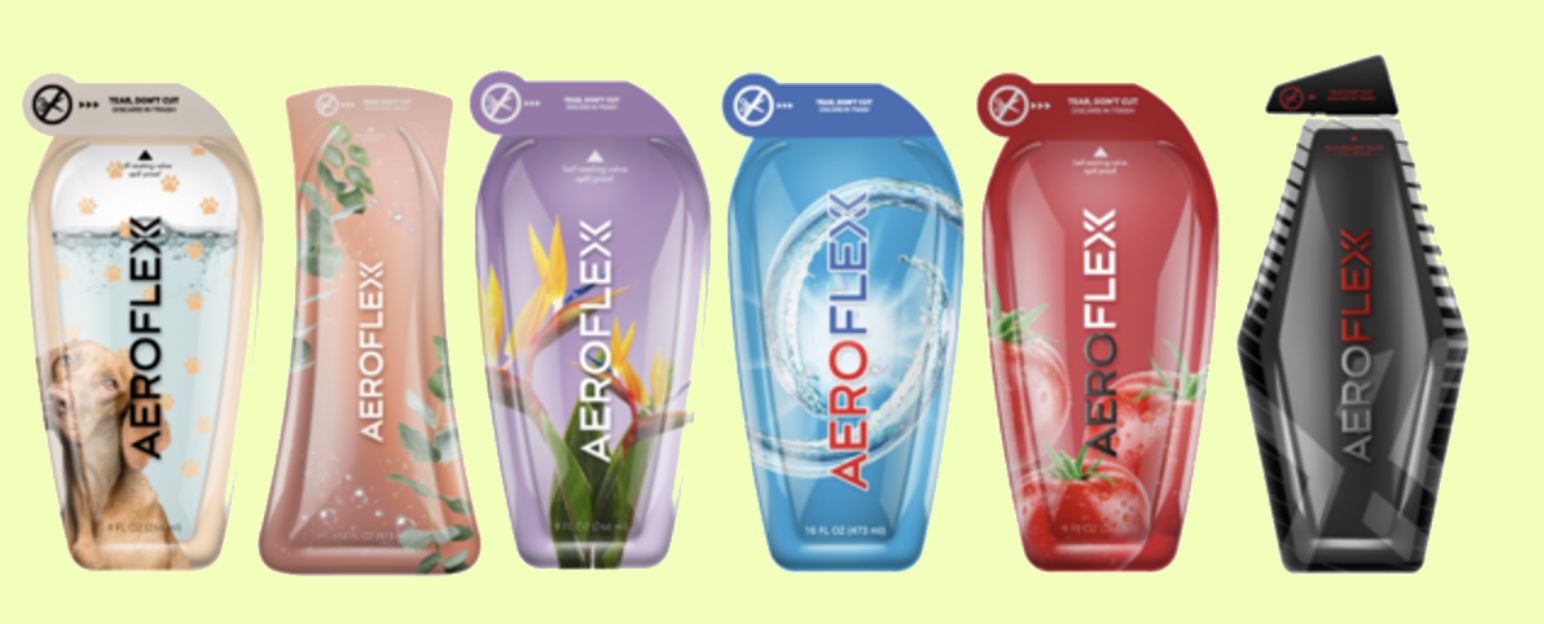
Can the liquid packaging industry — a frequent target of environmentalists — find a path to sustainability that’s also economically viable? Andrew Meyer, CEO of liquid packaging solution AeroFlexx, says the answer must be yes. “We have always had an obligation to society and future generations to do our part,” he says. “Now, we have the technology to build a sustainable future.”
According to the environmental advocacy group earth.org, the world generates 300 million tons of plastic waste every year, 60% of which ends up in landfills or somewhere else in the environment. Estimates are that 40% of the ocean surface is now covered with plastic debris, and that amount is increasing at an alarming rate each year.
As for why this is, Meyer points out that only about 9% of plastic globally is ultimately recycled, a sobering statistic that he says underlines the need to address plastic waste at its source. The AeroFlexx Paks are made with up to 70% less plastic and can incorporate up to 50% recycled content. Compared to the traditional rigid bottle, that translates to up to 85% less virgin plastic used for each package — and, yes, they can be recycled.
In 2020, AeroFlexx won the “Highest Achievement Award” at the 64th Annual Flexible Packaging Achievement Awards Competition. In 2018, it took top honors at Dow’s 30th Awards for Packaging Innovation. The main reason was more than just environmental stewardship; it also delivers a superior consumer experience and gives any organization an opportunity to improve brand value. Simply stated, AeroFlexx requires less to package more. Major consumer brands are taking notice to accelerate their sustainability commitments.
“By using 50-70% less plastic than traditional packaging, we not only conserve resources, but our packages cost less to ship,” Meyer says. “Unfilled, AeroFlexx Pak can be shipped flat so fewer ships and trucks are needed along the supply chain. And, once filled, they don’t break or spill. They don’t even need additional packaging, which saves more space as well as cardboard and those annoying styrofoam peanuts.” Additional commercial benefits, he says, include edge-to-edge artwork potential and flexible size options from 6 to 40 ounces.
Moreover, the AeroFlexx customizable package is opened with a simple tear at the top, then dispenses a precise amount of liquid per squeeze, conserving the contents more effectively than a traditional bottle. It is able to do this by using a unique airframe and integrated valve design that lends “tailored rigidity” to a flexible package without the need for a discrete closure, cap, or pump. Since its inception, AeroFlexx has been a part of the Innventure portfolio, meaning the disruptive company originators expect AeroFlexx to become a billion-dollar brand soon. Even if AeroFlexx captures just a sliver of its potential addressable market with its current value proposition, i.e. the best combination of rigid and flexible, Meyer says the company will hit its goal. According to Allied Market Research, the global liquid packaging market was valued at $331.8 billion in 2019 and is projected to reach $463.2 billion by 2027 — an annual growth rate of about 5%. This growth rate isn’t too surprising, however, when one considers that over 1 million plastic bottles are sold worldwide every minute, adding up to more than 500 billion every year.
Meyer says that converting just 500 million packaging units to Aeroflexx’s effective packaging solution could save over 13 million gallons of gas, 51 million pounds of carbon dioxide, and 120 million kilowatts of energy. He hopes to realize these potential savings fivefold within the next five years. “Innventure only invests in what it calls transformative technologies,” Meyer observes, “and AeroFlexx is truly a game changer.
It’s a technological breakthrough that combines the best attributes of flexibles and rigid to create a new-to-the-world package form. The industry has been starving for this type of disruption, so we expect AeroFlexx to quickly become a leader commercially.” In other words, AeroFlexx is not just improving the consumer goods industry’s economics at a time when every penny counts, it’s also carving a clear path to help exceed or accelerate the sustainability goals of any consumer products company.






